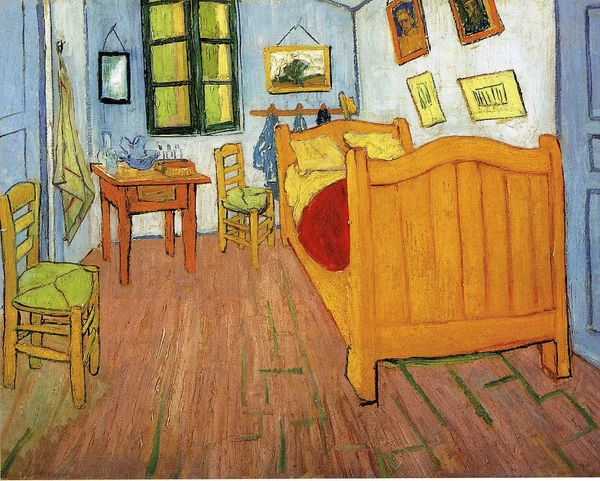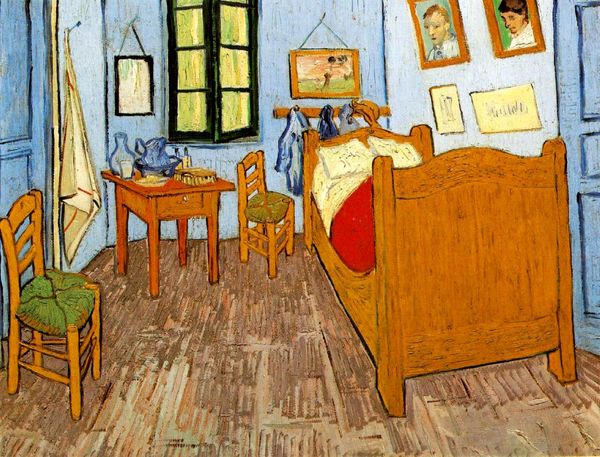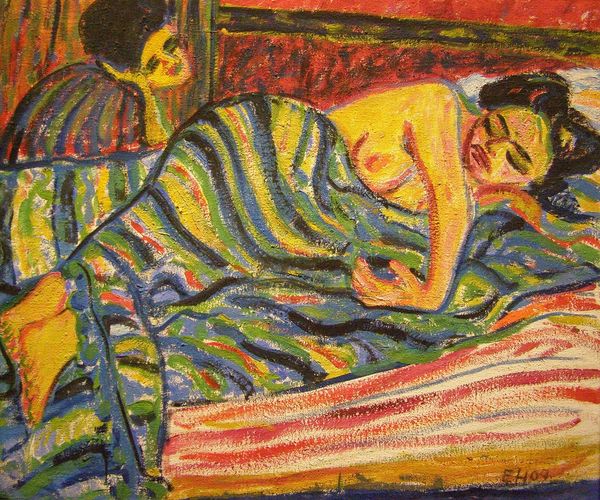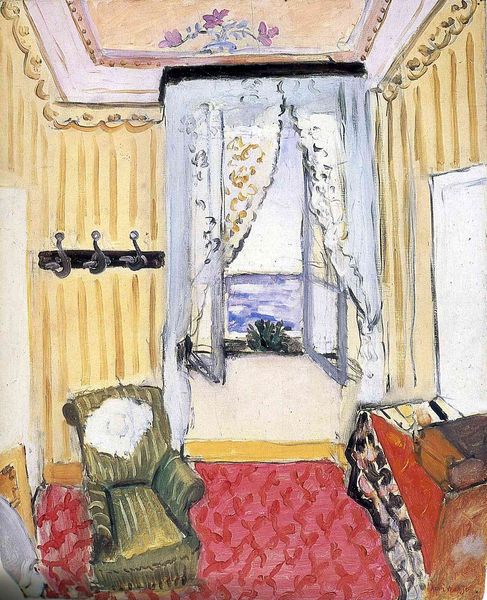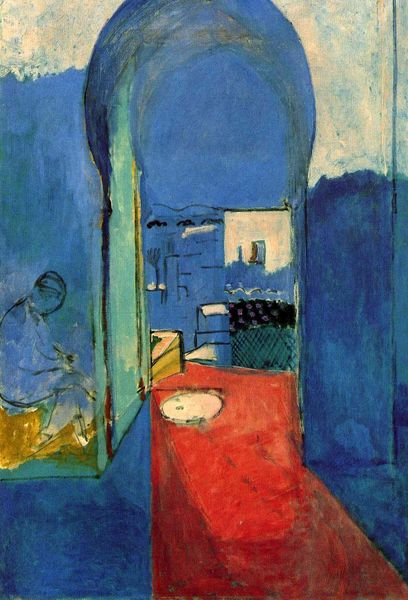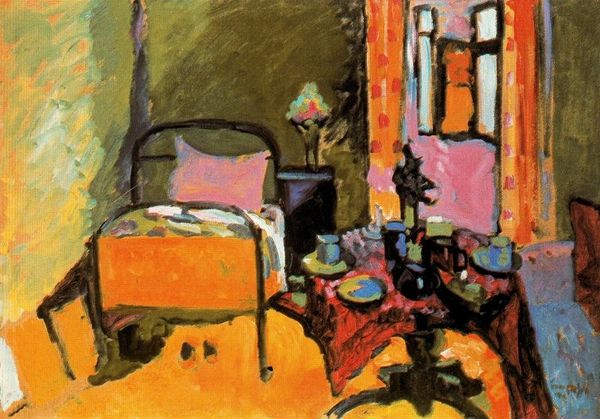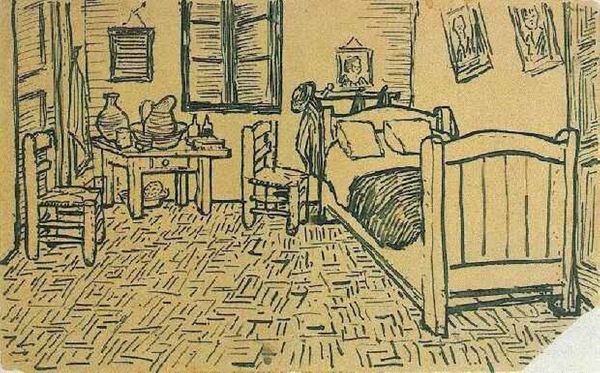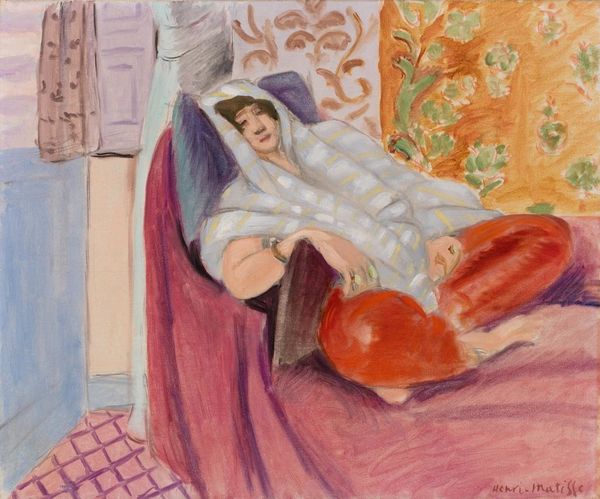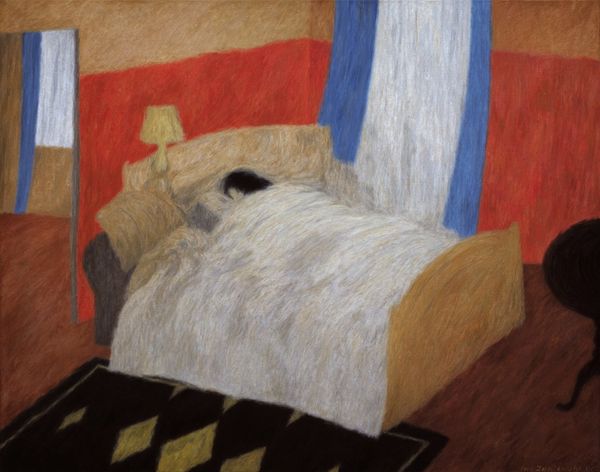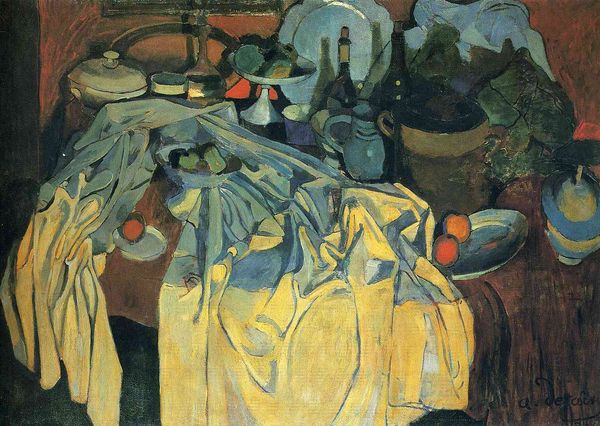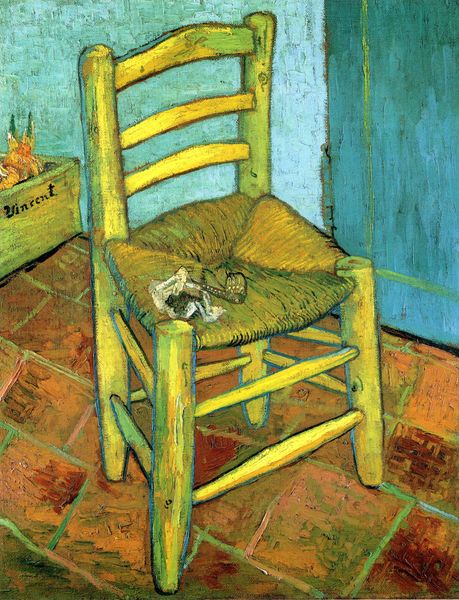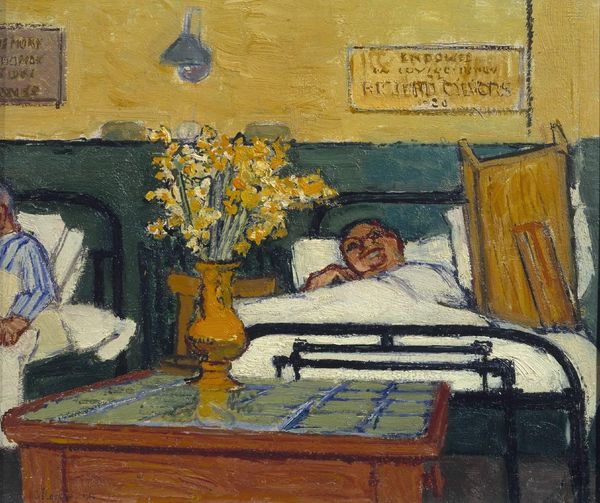
painting, watercolor
#
painting
#
greek-and-roman-art
#
oil painting
#
watercolor
#
watercolor
#
realism
Copyright: Spyros Papaloukas,Fair Use
Editor: Here we have Spyros Papaloukas’ “Cell at Mount Athos”, an oil painting. The stark simplicity, especially the beds, makes me wonder about the inhabitants and the purpose of the space. How do you read this piece? Curator: Immediately, I'm drawn to the raw materials at play. The pigment, thinly applied like watercolor in areas, reveals the tooth of the paper—an active decision, resisting the sleekness we often associate with oil paintings. Editor: So, not just the *subject* of a simple monastic cell, but the simplicity of *making* it. Curator: Precisely! Look at the repetition of the bed frames, almost industrially produced, yet rendered with handmade looseness. The material contrast here is striking: manufactured iron versus the intimate strokes of Papaloukas' brush. He shows us a liminal space; the bed, of course, a site of labor but also of consumption. What impact might that have? Editor: So the bed, in that case, is about consumption and rest, a function for the monks performing some type of labor in their cell, but the work is more implicit and related to religious production. Curator: Consider the context. Mount Athos is a self-governed monastic republic. This image gives material form to an almost ascetic lifestyle, which in itself would have a material cost for both its producers and consumers. We could question what "cost" would imply, what the costs associated with spiritual "gain" may be, and whether or not it is accurately illustrated here. What does the *image itself* as commodity perform in such a scenario? Editor: This focus on the material reality, especially concerning the monks and Papaloukas himself, transforms my perception of this "cell." Thanks! Curator: My pleasure. It prompts us to rethink conventional readings and ask questions about process, not just pious concepts.
Comments
No comments
Be the first to comment and join the conversation on the ultimate creative platform.
